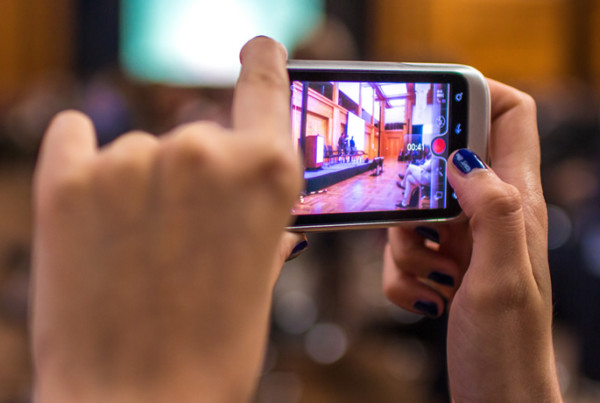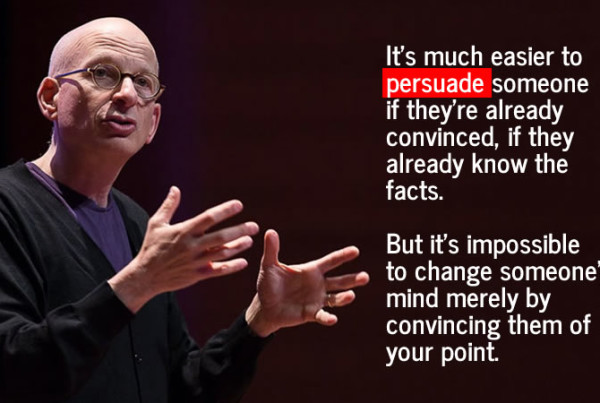 I don’t Know Bill Crandall, but I know people like him. You probably do too.
I don’t Know Bill Crandall, but I know people like him. You probably do too.
You know, it’s those people that you go out to lunch with who pour salt on their food before they even taste it because they just assume it needs more flavor.
Usually they’re so wrapped up in their own conversation to even pay attention to the time and effort that the chef just spent on cooking their meal.
No, I don’t know Bill Crandall but I certainly know the type. I’m sure you’ve run into someone like him. Especially if you work in social media in a traditional advertising agency.
So who is this Bill Crandall chap? Well, first let me tell you how I came to know about him. I was reading an article on AdAge, the advertising agency rag, and this article basically bashed Twitter saying that it didn’t provide an honest representation of the real world.
The author basically said that Twitter was for younger, minority, hipsters who are self-absorbed sycophants of society’s echo chamber.
“Twitter users are slightly more likely than non-users to be female and twice as likely as non-users to be under age 35. Twitter users are 20% more likely than non-users to live in a city and 28% less likely to live in a rural area.
Twitter users are 16% more likely to be Hispanic and 10% more likely to be black than non-users, and 54% of Twitter users have no children or grandchildren, compared to 34% of non-users; 45% of Twitter users own a home, compared to 64% of non-users.
And 40% of Twitter users describe themselves as early adopters, compared to just 23% of non-users.”
The author went on to ask a question to see if brands really understand how to use Twitter. If you’ve used Twitter for any length of time, you probably already know the answer to that question. No earth shattering revelation there.
“… how many companies are wasting energy by targeting a bunch of people who really don’t align with their brand?”
Therein lies the problem. Traditional advertisers don’t get it. That last question just proved it. Traditional advertisers still want to make social media about their message. They want to make it about their brand.
It scares the bejeebus out of them that they no longer have that power.
Every single person old enough to tender cash for goods and services is a consumer. However, not many of us at all, are looking to be “targeted” by a brand. We abhor your interruptions. We avoid your commercials like the plague.
And I hate to break it to traditional advertisers, we’re never looking to align with your brand. You’re just not getting it!
“Clearly the Twitter audience is more relevant to some brands than others.”
No! That’s the commercial interruptus part of your brain talking! You have it backwards. What is “real” about Twitter and the successful brands and agencies using Twitter is that they have figured out the right way to approach social media.
That being some brands have become more relevant to the audience than others. See the difference? While some brands are worried about “targeting”, “being on brand” and “messaging”, other brands have learned to be human and real. They’ve learned to be a part of the audience instead of a voice talking down to it.
The value in social media for brands is that they have the opportunity to be relevant with a vocal and engaged audience. But with that opportunity comes great responsibility. It’s not to be taken for granted. There have been scores of articles written lately that admonish brands and agencies as to how to capitalize on these opportunities.
Yet, time and time again, we see brands and agencies either unwilling or incapable of using social media to their benefit. The author of the article references a conclusion wherein he speaks of Twitter user’s “love” or “like” of a brand. He says that “brands like Hanes and Carhartt under-index in popularity among Twitter users, as do casual dining establishments like Olive Garden and Applebee’s”.
Hmm…guess he never actually has engaged with Applebee’s or ran any metrics regarding their interaction on Twitter. he obviously never has spoken to anyone at Applebee’s. If he had he would know what their approach to social media is. He would know the results of some of their recent social campaigns. He would know the right questions to ask in a poll.
Here’s a hint. People don’t wake up wanting to see what a brand has to say. People don’t log on to Twitter just begging to see what a brand has to proffer. No one clamors for brand messaging.
For a brand to see “real” results on Twitter (remember, this AdAge article was about being “real“)…you actually have to be…wait for it…”real“!
People expect brands to be real and relevant. Like this recent tweet from one of my favorite brands to watch, DiGiorno Pizza.
Don't you ever say, pizza doesn't pay, I will always love you. @DiGiornoPizza #PizzaSongLyrics just made my Friday!! pic.twitter.com/QaTrOZmbJi
— Justin Kirkland (@justinkirkland4) February 8, 2014
Does your brand bring it like that? Does your agency help guide you to provide content like that?
Brands need to understand that success on Twitter and the other social platforms is understanding what works for a commercial doesn’t work on social. You have to bring it natively relative to the platform.
Brands and their agencies may not be suited for what it takes to succeed on social. While you’re sitting in a conference room planning your “message” for the next quarter, you’re missing your opportunity to be relevant.
Relevance has a deadline. Not a soul on Twitter is waiting for your message. We don’t care what you have to say unless it means something to us. It’s the cold, hard truth.
Until brands realize that they don’t control their brand on social media, we’ll keep getting absurd articles like the one referenced here with traditional advertisers trying to put social media into their box.
Quick…name the second or third $4Million dollar commercial that aired during the Super Bowl. Now name the brand that ran a commercial AFTER the Super Bowl that trended online for days after the Super Bowl, garnered over a billion impressions (yes, you read that right), and had 3 million mentions on Twitter, gained over 200,000 mentions in a MINUTE and posted a huge gain in traffic to their website?
Some people have actually called the Esurance promo gimmicky and cheap. You mean like a $4Million spot that ran once for 30 seconds, that no one will remember? Oh…okay.
So back to this Bill Crandall guy and why I was taken aback by him. You see, he read the AdAge article and chose to comment thereafter. I believe his comment underscores the problem with traditional advertising agencies and how they may be advising their clients.
What you’re about to read was taken verbatim from his AdAge comment. I wanted you to see the mindset of some in the traditional agency world.
Since I’m in the agency business, I created my Facebook and Twitter accounts about five years ago, just in case a client or new biz prospect asked “Are you on Facebook and Twitter?” and I could honestly answer “Yes”. And I have followed both just to see what’s happening (ironically, I have never Tweeted a single word to anyone, yet I have hundreds of “followers”. Go figue that on a KPI dashboard.)
Since then I’ve drawn two fundamental conclusions: 1) Facebook is where people exchange personal photos, and 2) Twitter is where people offer mindless opinions in a blink without actually thinking.
At some point brand marketers will pick up on this and their career shelf-lives will expand proportionately … if and when they realize that their brands actually have to say something about their product beyond mindless entertainment and “fishwife” or “yenta” online gossip. Bill Crandall
This guy has just told the world that he created a Twitter account so he could purposely mislead his clients and prospects. His words. Not mine. He then goes on to PROUDLY say that he’s never even posted a single Tweet in 5 years. But wait…it gets even more absurd. Based upon having absolutely no experience in social media, he’s drawn not one, but “two fundamental conclusions“.
He says that one of the conclusions of his well researched thesis on social media, is that all of us on Twitter are thoughtless and mindless. Which incidentally must include the 500+ other mindless souls who actually shared the AdAge article. But that must have been lost on him when he posted his comment.
And this guy is actually in the advertising agency business.
Well something tells me that as a result of this 1,500+ word post and the social media promotion that will follow, Bill Crandall might just find out how mindless and thoughtless Twitter users really are.
I just hope that the malaise that affects Bill Crandall and others in traditional advertising agencies continues to spread. Why? Because the opportunity for the rest of us will continue to grow exponentially. With people like Bill Crandall counseling brands with inanity like this, there’s a lot of new business to be had.
I have to wrap this article up. I have to go check out the roster of clients that Crandall represents. I have to get some letters out to them before the rest of you mindless social media marketers get there before me.


